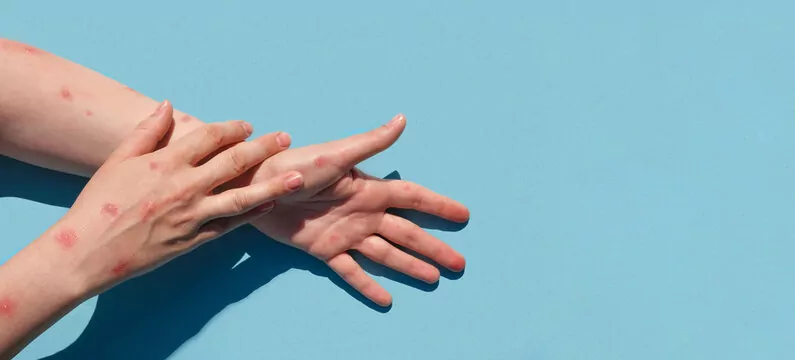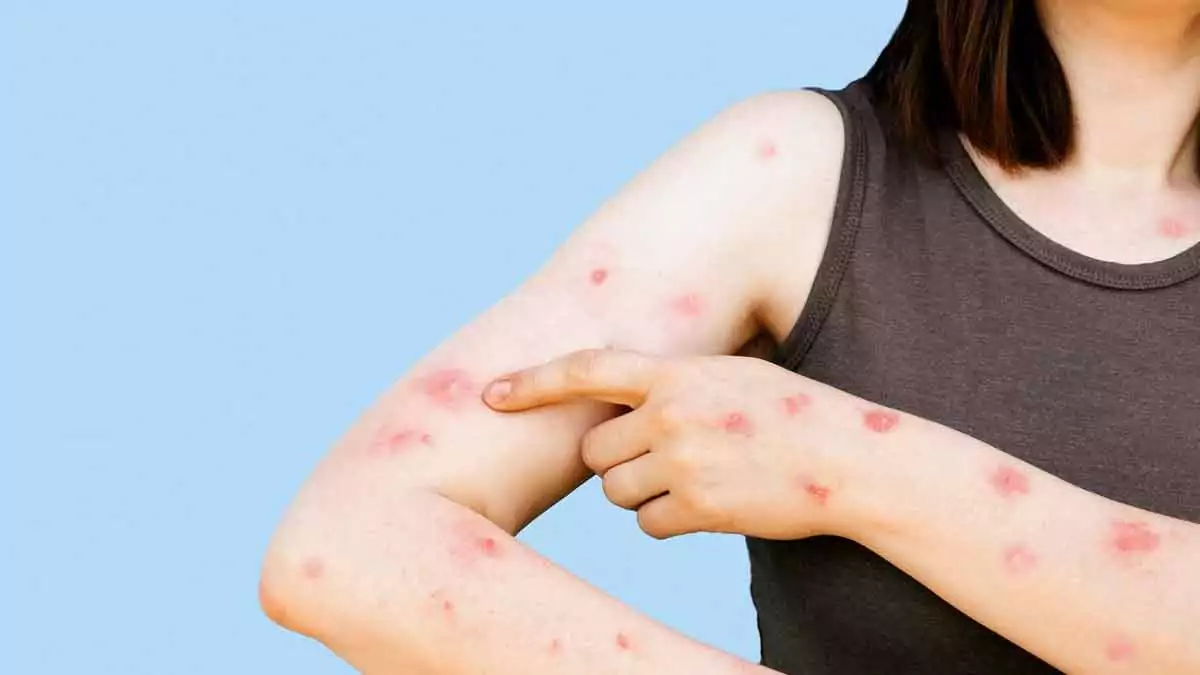What is Monkeypox Virus?
Mpox (formerly known as monkeypox) is not a new disease.
The name monkeypox comes from the first discovery of the virus in monkeys in a Danish laboratory in 1958.
In humans, monkeypox virus was first identified in 1970 in a 9-month-old boy in the Democratic Republic of Congo, in an area where smallpox had been eradicated in 1968.
Description of Monkeypox Virus
Monkeypox virus is a DNA virus belonging to the family Poxviridae and the genus Orthopoxvirus.
It was first discovered in 1958 in laboratory monkeys, hence the name“monkeypox“.
How to recognize monkeypox virus?
Monkeypox infection can be recognized by its symptoms and clinical signs.
It is first necessary to exclude other rash diseases such as chickenpox, measles, bacterial skin infections, scabies, syphilis and drug-induced allergies.
To diagnose monkeypox, PCR can be performed by sampling skin lesions, the upper shell of the vesicle or fluid from vesicles and pustules, and dry crusts.
How is Monkeypox Virus Transmitted?
The monkeypox virus, despite the “monkey” in its name, is found in rodents such as squirrels, rats and mice, much more than monkeys, and is transmitted from these animals to humans.
- Direct transmission from the animal: Through bites, scratching, contact with the animal’s blood and body fluids or consumption of its meat.
- Human-to-human transmission: Direct contact with skin lesions of the infected person, direct or indirect contact with secretions (clothes, towels, sheets, etc.), sexually and from mother to baby (placental transmission).
The virus can enter healthy people through invisible cracks/scratches in the skin, mucous membranes (mouth, nose, eyes) or the respiratory system.
What are the Symptoms of Monkeypox Virus?
Monkeypox (Mpox) causes fever, headache, fatigue, generalized body aches, swollen lymph nodes and skin lesions (rashes).
Symptoms appear on average 6-13 days after contact with the virus.
- Although asymptomatic cases of Mpox have been reported, this is extremely rare and the disease is usually symptomatic.
Mpox is not expected to spread in the community as much as COVID-19 or other asymptomatic infections, as the appearance of symptoms in infected people allows them to be recognized and placed in isolation.
However, there is concern that the Congolese strain is spreading more rapidly and across all groups. - Those who have had contact with animals or persons confirmed to have Mpox should be monitored for signs and symptoms for 21 days after last contact.

How to Treat Monkeypox Virus?
There is currently no safe and proven treatment for monkeypox virus infection.
Cases in the US have been controlled with the antiviral drugs cidofovir, brinsidofovir, tekovirimat (ST-246) and smallpox immunoglobulin, but their efficacy has not been conclusively proven and studies are ongoing.
How should we protect ourselves from the monkeypox virus?
- Identification and follow-up of people with a history of travel to endemic areas.
- Hands should be washed frequently.
- Health workers and others who may be in the same environment with them should wear masks, visors, gloves, goggles and protective clothing.
- Surfaces should be cleaned with disinfectant.
- Groups at risk for the disease should be identified and these groups should be vaccinated.
Frequently Asked Questions
The Difference Between Monkeypox Virus and Chickenpox Virus
Although the monkeypox virus and chickenpox share many symptoms, they are caused by very different viruses.
Monkeypox is an orthopox virus, while chickenpox is caused by the varicella-zoster virus, which causes shingles.
Who is at Risk for Monkeypox Virus?
Healthcare workers, people with low immunity (chronic diseases, cancer, HIV+), pregnant women and newborns are at risk.
Is the Monkeypox Virus Fatal?
Mpox usually resolves spontaneously within 2-4 weeks.
However, immunocompromised people and young children can become severely ill.
Overall, 1-6% of people infected die, the majority of whom are young children.
In the Central African subtype (Lineage 1), lethality can be as high as 11%.
In the current outbreak of this strain in Congo, the mortality rate is around 5%.
In the 2022 outbreak, the mortality rate is very low and < reported as 1%.
Is There Vaccination Against Monkeypox Virus?
Smallpox vaccination has been shown to be about 85% effective in preventing Monkeypox in those vaccinated with smallpox vaccine when smallpox vaccination was routinely administered.
Therefore, those who have been vaccinated against smallpox may have a milder illness or be protected from the disease.
A vaccination mark on the upper forearm is an acceptable indicator of previous vaccination against smallpox.
Today, however, since 1980, smallpox vaccination is no longer practiced.
Where is the Monkeypox Virus Found?
Monkeypox is a rare viral zoonotic disease that is endemic primarily in the tropical rainforests of Central and West Africa and occasionally spreads to other parts of the world.
Starting in September 2023, cases have been reported in the Democratic Republic of Congo, followed by neighboring countries of the Republic of Congo, Rwanda and Guinea, and Nigeria as of 2024.
Which age group is affected by the monkeypox virus?
Monkeypox can affect all age groups, but some groups may be at higher risk.
In general, the virus can affect any age group, but the following factors should be considered: children, people with immunodeficiencies (HIV/AIDS, autoimmune diseases, malignancies), the elderly and people living in areas of Central and West Africa where monkeypox virus is endemic.
Does monkeypox go away on its own?
Monkeypox infection is a disease that usually resolves on its own.
Most cases present with mild to moderate symptoms and resolve within a few weeks.
Who Mostly Suffers from Monkeypox?
Children, people with immunodeficiencies (HIV/AIDS, autoimmune diseases, malignancies), the elderly and people living in areas of Central and West Africa where monkeypox virus is endemic are at greater risk than others.





